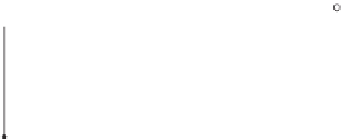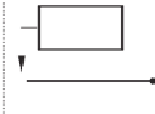Environmental Engineering Reference
In-Depth Information
V
DC
-
+
u
f
u
o
Inverter
bridge
PWM
u
u
L
f
i
1
i
c
i
2
R
f
C
f
filter inductor
u
c
R
d
neutral
Figure 6.2
Control plant
P
u
for the inner voltage controller
S
c
u
g
i
2
L
g
R
g
gr
i
d
i
nter
f
ace
induc
t
or
u
o
grid
Figure 6.3
Control plant
P
i
for the outer current controller
and dispatch power to the local load and to synchronise the inverter with the grid. When
the inverter is synchronised and connected with the grid, the voltage and the frequency are
determined by the grid.
The main function of the outer-loop current controller is to exchange a clean current with
the grid even in the presence of grid voltage distortion and/or non-linear (and/or unbalanced
for three-phase applications) local loads connected to the inverter. The current controller can
be used for over-current protection but, normally, it is included in the driving circuits of the
inverter bridge. A PLL can be used to provide the phase information of the grid voltage,
which is needed to generate the current reference
i
ref
(see Section 6.5 for an example). As
the control structure described here uses just one inverter connected to the system and the
inverter is assumed to be powered by a constant DC voltage source, no controller is needed to
regulate the DC-link voltage. Otherwise, a controller can be introduced to regulate the DC-link
voltage.
Another important feature is that the grid voltage
u
g
is feed-forwarded and added to the
output of the current controller. This is used as a synchronisation mechanism and does not
affect the design of the controller, as will be seen later.
u
g
u
o
−
τ
s
−
s
W
(
s
)
e
W
(
s
)
e
i
2
d
d
i
u
+
-
-
+
+
e
u
i
ref
u
i
u
ref
u
u
e
i
C
i
(
s
)
C
u
(
s
)
+
+
in
te
rnal model
inte
r
n
a
l
m
o
d
e
l
Figure 6.4
Cascaded current-voltage controller for inverters, where both controllers adopt the
H
∞
repetitive strategy














































































Search WWH ::

Custom Search